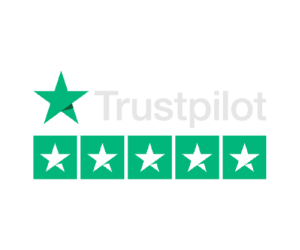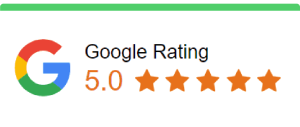The Future of Brand Visibility in the AI Era
AI-optimized content has become the cornerstone of modern digital marketing success. The digital landscape has fundamentally shifted, and brands that fail to adapt their AI-optimized content strategies risk becoming invisible in the AI era. As traditional search engines evolve to incorporate AI overviews and answer engines become the primary gateway for information discovery, businesses must embrace Answer Engine Optimization (AEO) alongside their existing SEO strategies. At Art Revo, we understand that optimize your content for AI visibility requires a comprehensive approach that blends creative storytelling with technical precision—exactly what modern brands need to flourish in this new paradigm.
The emergence of AI search engines like ChatGPT, Google’s AI overviews, and other AI-powered answer platforms has created a seismic shift in how consumers discover and interact with brands. Unlike traditional search engine optimization, which focuses on ranking for specific keywords, AEO focuses on becoming the definitive answer that AI systems trust and reference. This transformation affects every aspect of digital marketing, from content creation and brand positioning to web design and social media strategy.
For creative professionals, design enthusiasts, and forward-thinking business leaders, AI-optimized content isn’t just advantageous—it’s essential for survival. Understanding the difference between AEO and SEO requires mastering AI-optimized content principles that prioritize authoritative content, structured data, and direct answers over traditional search result rankings. This evolution presents unprecedented opportunities for businesses willing to adapt their content strategy and embrace new optimization approaches.
Understanding Answer Engine Optimization and AI-Optimized Content in the Modern AI Landscape
AI-optimized content represents the foundation of Answer Engine Optimization, marking a fundamental shift from optimizing for search engines to optimizing for AI models that power answer engines. Creating effective AI-optimized content requires understanding how AI systems evaluate and prioritize information differently than traditional search algorithms. While SEO traditionally focused on driving traffic to websites through search engine results pages, AEO aims to make your content the source that AI systems cite when providing answers to user queries.
The distinction between traditional search and AI search becomes clear when examining AI-optimized content requirements. Traditional search engines present users with a list of potential sources, requiring them to click through and evaluate multiple options. AI answer engines, conversely, synthesize AI-optimized content from various sources to provide immediate, comprehensive responses. This means that visibility in AI overviews and AI search results requires different optimization strategies than conventional SEO approaches.
Google AI overviews now appear for an increasing number of search queries, fundamentally changing how users consume AI-optimized content. These AI overviews pull AI-optimized content from multiple sources to create comprehensive answers, often reducing the need for users to visit individual websites. For brands, this creates both challenges and opportunities: while click-through rates may decrease, being cited in AI overviews can establish tremendous authority and brand recognition.
Answer engines use sophisticated algorithms to evaluate AI-optimized content quality, relevance, and authority. They prioritize sources that provide clear, factual answers to specific questions through well-structured AI-optimized content, demonstrate expertise in their domain, and present information in structured, easily digestible formats. This shift requires brands to rethink their content creation process, focusing on becoming the definitive source for information within their industry niche.
The Evolution from SEO to AEO: What Brands Need to Know
The transition from search engine optimization to answer engine optimization doesn’t mean abandoning SEO entirely. Instead, successful brands integrate both approaches to maximize their visibility across all platforms. SEO and AEO work synergistically, with traditional search optimization providing the foundation upon which AI optimization builds.
Understanding the difference between AEO and SEO helps brands develop more effective optimization strategies. While SEO focuses on keywords, backlinks, and page rankings, AEO emphasizes providing direct answers, demonstrating expertise, and structuring content in ways that AI models can easily parse and understand. This requires a more holistic approach to content strategy, one that considers both human readers and AI systems.
The types of answer engines vary significantly in their approach and focus. Google’s AI overviews integrate directly into traditional search results, while AI chatbots like ChatGPT provide conversational responses. AI assistants on various platforms offer voice-activated answers, and specialized AI tools focus on specific industries or use cases. Each type requires tailored optimization approaches to achieve maximum visibility.
Brands must also consider the correlation between AI visibility and traditional search performance. Content that performs well in AI overviews often demonstrates characteristics that search engines value: authority, relevance, comprehensiveness, and user satisfaction. This synergy means that investing in AEO can improve overall search optimization performance while preparing brands for the future of information discovery.
Strategic AI-Optimized Content Creation for AI-Powered Answer Engines
Creating AI-optimized content requires a fundamental shift in approach. Traditional content creation often focused on keyword density and length, but AI-optimized content for answer engines must prioritize clarity, accuracy, and comprehensive coverage of topics. AI systems evaluate AI-optimized content based on its ability to provide complete, authoritative answers to user questions.
Structure your AI-optimized content with AI models in mind by implementing clear hierarchies, using descriptive headings, and breaking complex information into digestible sections. Answer engines favor AI-optimized content that follows logical progressions, provides step-by-step guidance, and addresses common questions comprehensively. This approach not only improves AI visibility but also enhances user experience across all platforms.
The integration of structured data becomes crucial for AI-optimized content success. Search engines and AI systems rely on structured markup to understand AI-optimized content context, relationships, and authority. Implementing schema markup, creating clear content hierarchies, and using standardized formats helps AI models better understand and utilize your AI-optimized content when generating responses.
AI-optimized content formats play a significant role in optimization success. While traditional SEO might prioritize long-form blog posts, AEO benefits from diverse AI-optimized content types: FAQ sections, how-to guides, comparison charts, and definitive resource pages. Each format serves different AI query types and increases the likelihood of your AI-optimized content being cited across various answer platforms.
Optimizing Brand Visibility Through AI-Optimized Content Across AI Platforms
Achieving visibility across AI platforms requires understanding how different systems evaluate and prioritize AI-optimized content. Google AI mode operates differently than ChatGPT’s training data selection, and AI chatbots have distinct preferences for AI-optimized content structure and authority signals. Brands must develop platform-specific strategies while maintaining consistent brand messaging across all channels.
The concept of “becoming the answer” represents the ultimate goal of AEO. Rather than competing for attention among multiple search results, brands should strive to be the primary source that AI systems reference for specific topics within their expertise. This requires developing comprehensive, authoritative content that addresses user intent more effectively than competing sources.
AI search visibility depends heavily on content quality and relevance signals. Answer engines evaluate factors including source authority, content freshness, factual accuracy, and comprehensive coverage of topics. Brands must invest in creating high-quality, well-researched content that demonstrates genuine expertise in their field.
The relationship between on-page optimization and AI visibility continues to evolve. Traditional SEO elements like title tags, meta descriptions, and internal linking remain important, but AEO requires additional considerations: content depth, answer completeness, and the ability to address follow-up questions that users might have.
Technical Implementation: Tools and Strategies for AEO Success
Implementing effective AEO strategies requires the right combination of tools and techniques. Use tools like schema markup generators, content optimization platforms, and AI analysis software to evaluate and improve your content’s AI readiness. These tools help identify opportunities for improvement and track performance across different answer engines.
Structured data implementation becomes more critical in the AI era. Search engines and answer platforms rely on structured markup to understand content relationships, authority signals, and contextual relevance. Proper implementation of JSON-LD, microdata, and RDFa markup significantly improves the likelihood of being cited in AI overviews and answer results.
Content optimization for AI requires ongoing analysis and refinement. Monitor how your content performs across different AI platforms, track citation rates in AI overviews, and analyze user engagement with AI-generated responses that reference your brand. This data provides valuable insights for refining your AEO strategy.
The integration of generative AI tools into content creation workflows can improve both efficiency and quality. However, brands must maintain authentic voice and expertise while leveraging AI assistance. The goal is to use AI tools to enhance human creativity and insight, not replace the unique perspective that makes brands distinctive.
Measuring Success: Analytics and Performance Tracking in the AI Era
Traditional metrics like organic traffic and keyword rankings become less relevant as AI overviews and direct answers reduce click-through rates. Brands must develop new success metrics that reflect the changing landscape: citation rates in AI responses, brand mentions in answer engines, and authority recognition across AI platforms.
Understanding conversion rates from AI visibility requires sophisticated tracking and attribution models. While users may not click through to websites as frequently, they still make purchasing decisions based on information discovered through AI systems. Brands must develop methods for tracking and attributing these conversions appropriately.
The AI search landscape continues to evolve rapidly, making adaptability crucial for long-term success. Regular monitoring of algorithm changes, new platform features, and emerging answer engines helps brands stay ahead of the curve. This proactive approach ensures continued visibility as the technology develops.
Performance tracking for AEO requires both quantitative and qualitative analysis. While metrics provide important data points, understanding the context and quality of AI citations offers deeper insights into brand positioning and authority within the AI ecosystem.
Industry-Specific AEO Strategies for Creative and Marketing Agencies
Creative agencies face unique challenges and opportunities in the AI era. Visual content, design portfolios, and creative processes require different optimization approaches than text-based content. Brands must develop strategies that showcase creativity while meeting the structured requirements of AI systems.
For marketing agencies, demonstrating expertise across multiple disciplines becomes crucial. AI systems favor comprehensive sources that can address related questions within a topic cluster. Agencies must create content that establishes authority across their service areas while maintaining focus and expertise depth.
The integration of multimedia content into AEO strategies presents both challenges and opportunities. While AI systems primarily process text, they increasingly consider visual elements, video content, and interactive features when evaluating content quality and user engagement.
Brand storytelling in the AI era requires balancing narrative creativity with factual precision. AI systems prioritize accuracy and authority, but brands still need to maintain distinctive voice and creative positioning. The challenge lies in creating content that satisfies both requirements simultaneously.
Future-Proofing Your Brand for Continued AI Evolution
The AI search landscape will continue evolving at an unprecedented pace. Brands must develop flexible strategies that can adapt to new platforms, algorithm changes, and user behavior shifts. This requires ongoing investment in content quality, technical infrastructure, and strategic planning.
Emerging AI technologies will create new optimization opportunities and challenges. Voice search, visual AI, and specialized industry AI tools will require adapted strategies and content formats. Brands that prepare for these developments will maintain competitive advantages as the technology evolves.
The importance of authentic expertise and brand authority will only increase as AI systems become more sophisticated. While optimization techniques may change, the fundamental requirement for high-quality, authoritative content will remain constant. Brands must continue investing in genuine expertise and thought leadership.
Building sustainable AEO strategies requires long-term thinking and consistent execution. Unlike traditional SEO campaigns that might show quick results, AEO success develops over time through consistent demonstration of expertise, authority, and user value.
Integrating AEO with Comprehensive Digital Marketing Strategies
Successful AEO implementation requires integration with broader digital marketing initiatives. Social media content, email marketing, video production, and web design must all consider AI optimization principles while maintaining brand consistency and user experience quality.
The synergy between different optimization approaches becomes increasingly important. Content optimized for answer engines often performs well across multiple channels, from traditional search to social media discovery. This efficiency makes AEO investment particularly valuable for resource-conscious brands.
Marketing automation and AI optimization intersect in powerful ways. Automated content distribution, personalized user experiences, and dynamic content optimization can all be enhanced by understanding how AI systems evaluate and present information.
Visual storytelling and design excellence remain crucial even as AI systems primarily process text. The brands that succeed in the AI era will be those that combine technical optimization excellence with creative distinction and authentic brand personality.
Conclusion: Embracing the AI-Optimized Future with Art Revo
The transformation from traditional SEO to Answer Engine Optimization represents one of the most significant shifts in digital marketing history. Brands that embrace this change early will establish competitive advantages that compound over time, while those that delay risk losing visibility in an increasingly AI-driven world.
At Art Revo, we specialize in helping brands navigate this complex transition while maintaining their creative edge and authentic voice. Our comprehensive approach combines technical AEO expertise with creative storytelling, ensuring that your brand not only achieves visibility in AI overviews but also maintains the distinctive personality that drives customer connection and loyalty.
The integration of AI optimization with creative branding, web design, videography, and comprehensive marketing strategy requires expertise across multiple disciplines. Our team understands how to optimize content for AI systems while preserving the creative elements that make brands memorable and engaging.
As answer engines continue to evolve and new AI platforms emerge, having a strategic partner who understands both the technical requirements and creative opportunities becomes invaluable. Art Revo helps brands build sustainable, adaptable strategies that perform well today while positioning for future success.
The AI era offers unprecedented opportunities for brands willing to adapt and innovate. By combining authoritative content creation, technical optimization excellence, and creative distinction, businesses can achieve remarkable visibility and growth in this new landscape. Contact Art Revo today to begin your transformation and secure your brand’s future in the AI-optimized world.
Frequently Asked Questions
Q: What exactly is the difference between AEO and SEO, and why should my brand care?
A: While SEO focuses on optimizing content to rank well in traditional search engine results pages, AEO focuses on making your content the authoritative source that AI answer engines cite when responding to user queries. The key difference lies in the end goal: SEO aims to drive traffic to your website, while AEO aims to make your brand the definitive answer that AI systems trust. This matters because AI overviews now appear for increasing numbers of searches, and users are increasingly getting answers directly from AI systems rather than clicking through to websites. Brands that optimize for both SEO and AEO ensure visibility across all discovery methods.
Q: How do I know if my content is optimized for AI answer engines and visibility in AI overviews?
A: Content optimized for answer engines typically demonstrates several key characteristics: it provides direct, comprehensive answers to specific questions; uses structured data markup to help AI systems understand context; includes authoritative sources and expertise signals; and addresses follow-up questions users might have. To evaluate your content’s AI readiness, use tools like Google Search Console to monitor AI overview appearances, analyze competitor content that gets cited in AI responses, and ensure your content follows clear hierarchical structures that AI models can easily parse and understand.
Q: What types of answer engines should my brand prioritize for AEO efforts?
A: The most important answer engines to consider include Google’s AI overviews (integrated directly into search results), AI chatbots like ChatGPT and Claude, voice assistants like Siri and Alexa, and industry-specific AI tools relevant to your business. Each platform has different optimization requirements, but focusing on creating comprehensive, authoritative content that answers real questions will improve performance across all types of answer engines. Start with Google AI mode and major AI chatbots, then expand to specialized platforms as your AEO strategy matures.
Q: Can small creative agencies compete with larger companies in AI search visibility?
A: Absolutely! AI systems prioritize content quality, expertise, and authority over company size. Small agencies often have advantages in AEO because they can create more focused, specialized content that demonstrates deep expertise in specific niches. By becoming the definitive source for information within their specialty areas, smaller agencies can achieve excellent visibility across AI platforms. The key is to focus on providing comprehensive, authoritative answers within your area of expertise rather than trying to compete across all topics.
Q: How does AEO impact conversion rates and lead generation for marketing agencies?
A: While AEO may reduce direct website traffic as users get answers from AI overviews, it can significantly improve lead quality and brand authority. When your agency is consistently cited as the expert source in AI responses, it builds tremendous credibility and trust with potential clients. Users who do contact you after seeing your expertise demonstrated in AI answers are typically higher-quality leads with greater purchase intent. Additionally, being recognized as an authority by AI systems improves your overall brand reputation and can lead to increased referrals and word-of-mouth marketing.
Q: What’s the most important first step for implementing AEO in my existing content strategy?
A: Start by conducting an audit of your current content to identify pieces that answer specific questions your target audience asks. Then optimize these high-performing pieces by adding structured data, improving answer completeness, and ensuring they address follow-up questions comprehensively. Focus on becoming the definitive source for 5-10 key topics within your expertise area before expanding to broader content creation. Use tools like Google AI overviews and AI chatbots to test how well your content performs in AI responses, and refine based on what you learn.



